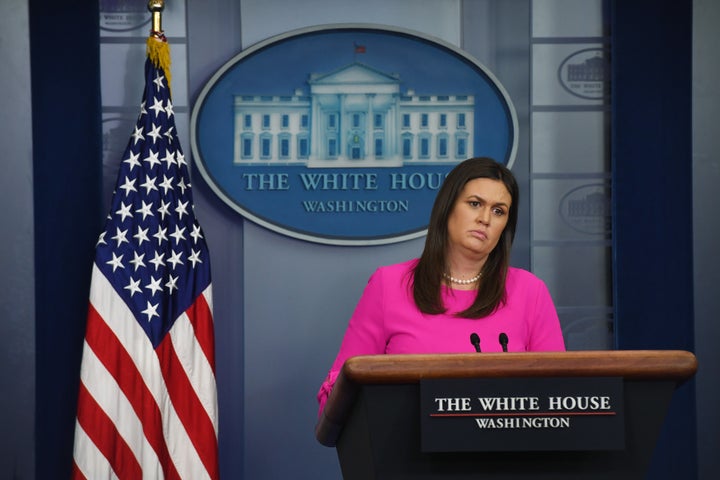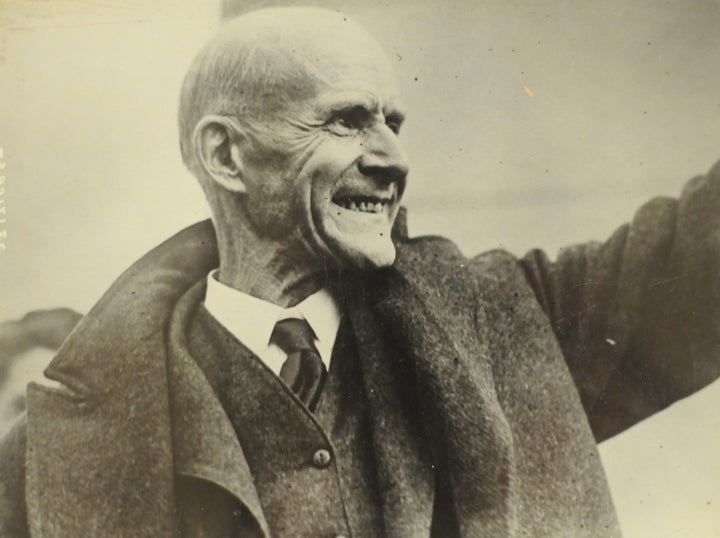President Donald Trump used his Twitter account over the weekend to rail against a restaurant that had refused to serve his press secretary and to trash a Democratic congresswoman who had called for people to protest and confront Trump administration officials. Trump’s social media strategy, experts argue, exemplifies several new challenges over censorship and the meaning of the First Amendment in the 21st century.
Those challenges exist because freedom of speech as we know it was crafted for a completely different media environment. The emergence of the internet and, more specifically, digital speech platforms like Facebook, Google and Twitter as a virtual public square created forms of censorship and speech suppression that our current legal constructs do not take into account.
How We Got Here

To understand how we got here, let’s go back to the First Amendment as we know it.
Our present conception of freedom of speech originated during and after World War I, when the government used the Espionage Act and related laws to silence and imprison antiwar dissenters and socialists. Supreme Court majorities approved of this crackdown on speech, but dissents and concurrences from justices including Louis Brandeis, Oliver Wendell Holmes and appellate Judge Learned Hand paved a path for future courts to establish a true right to freedom of speech. That happened in the 1960s and 1970s, when the Supreme Court overruled its past opinions and established strong protections against government censorship of political speech.
These decisions were based on a series of assumptions about how the government could censor political speech that were based on the media environment of the time. Back then, individuals had limited means to get their message to a mass audience. You needed access to a printing press, a radio frequency, television spectrum or a cable channel. With fewer platforms for mass communication, not everyone’s speech could be broadcast or printed, so audiences had a lot of time to devote to each speaker. It also made it easy for the government to censor speech by throwing speakers in prison or choking off their access to an audience by shutting down a newspaper or preventing a television station from airing a segment. The court ruled that the government could not censor speech by jailing dissenters or blocking the publication of information it deemed dangerous because the public relied on the limited number of speakers and venues to engage in the “marketplace of ideas” that undergirds a democratic society.
Today, thanks to the internet, the media environment that existed 50 years ago no longer exists. Instead of a single radio station disseminating news to its many listeners, now anyone can publish content through a digital platform to reach a global audience. In this way, speech is a lot more democratic ― almost everyone can speak and have a platform to make their speech heard. At the same time, this abundance of speech creates a glut of information, making it harder for people to pay attention.

This golden era of speech, Columbia Law School professor Tim Wu argues, has given rise to new forms of censorship.
“The low costs of speaking have, paradoxically, made it easier to weaponize speech as a tool of speech control,” Wu writes in a provocative essay, “Is the First Amendment Obsolete?” “The unfortunate truth is that cheap speech may be used to attack, harass, and silence as much as it is used to illuminate or debate.”
Wu identifies several distinctive new paths for censorship: Private digital platforms can themselves censor speech as they are not the government. Bots and trolls are deployed to flood digital platforms to change the subject, overwhelm other speakers and generally distract the general public. And troll armies, sometimes egged on by government officials, threaten targeted speakers.
Take some of Trump’s tweets of the past days.
The president’s tweets are a message from a government official, sent through what is considered an official account, that aim to point his supporters in the direction of a disfavored individual. By now, it’s a well-tested tactic for Trump. As a candidate, he threatened his opponents both on- and offline, called out private citizens for harassment on Twitter and encouraged violence from his supporters at his rallies. As president, the targets of his threats have including NFL players and individual journalists, calling for them to be fired or punished.
While it’s normal for political actors to criticize each other, as Trump criticized Waters, it is abnormal to use an official platform to issue an oblique threat of violence against the congresswoman or to target a private citizen like the restaurant owner. The restaurant and those with the same name but no connection to it have already been targeted with online and real-life harassment. Waters has received death threats before when the president has attacked her on Twitter. Previous Trump targets have also been harassed with violent images and death threats.
The “censorial mob,” Wu argues, seeks to “wear down targeted speakers and have them think twice about writing critical content.” The swarms of harassment are, effectively, a message from the president’s supporters telling his targets to shut up and get in line.
Governments around the world have deployed this tactic for years. This is clearly evident in non-democratic or less democratic countries that do not have the same free speech tradition as the United States. Instead of censoring speakers directly, these governments are instead deploying new tactics to censor speech by flooding platforms with trolls, bots and diversions to change the conversation away from dissenters or to confuse their messages. This is happening all around the world, from China to Russia to Turkey to Mexico.
What Can The First Amendment Do?

“The use of speech as a tool to suppress speech is, by its nature, something very challenging for the First Amendment to deal with,” writes Wu. “In the face of such challenges, First Amendment doctrine seems at best unprepared. It is a body of law that waits for a pamphleteer to be arrested before it will recognize a problem.”
The difficulty of applying current First Amendment jurisprudence to Trump’s tweets is that his supporters’ death threats and defacements are not officially organized by the government. This is a private mob, not a bunch of government agents.
Wu argues that courts would need to expand what actions constitute “state action” in these cases. First, he writes, the legal system should look at accomplice liability to potentially resolve the possible incitement of private online mobs by public officials.
“In the political ‘attack mob’ context, it seems that some official encouragement of attacks on the press or other speakers should trigger First Amendment scrutiny,” Wu writes.
While not every online political mob attack would implicate accomplice liability, Wu points to previous legal cases as examples of how the court establishes that punishments suffered by private speakers due to indirect pressure from government officials are deemed First Amendment violations. In Blum v. Yaretsky, the Supreme Court ruled in 1982 that liability as an accomplice can apply to indirect government action in response to private speech “when it has exercised coercive power or has provided significant encouragement, either overt or covert, that the choice must in law be deemed to be that of the State.” In 2010, the U.S. 6th Circuit Court of Appeals found that the government could be held responsible after an official complained to a woman’s employer about her comments at a public meeting and got her fired.
Does this mean anything for the president? Probably not now. Trump, however, is providing a steady stream of examples for how a president can use his position and resources to encourage the new ways to suppress dissent in the 21st century. If he continues as he has, the courts may have to deal with the new threats to free speech sooner rather than later.
